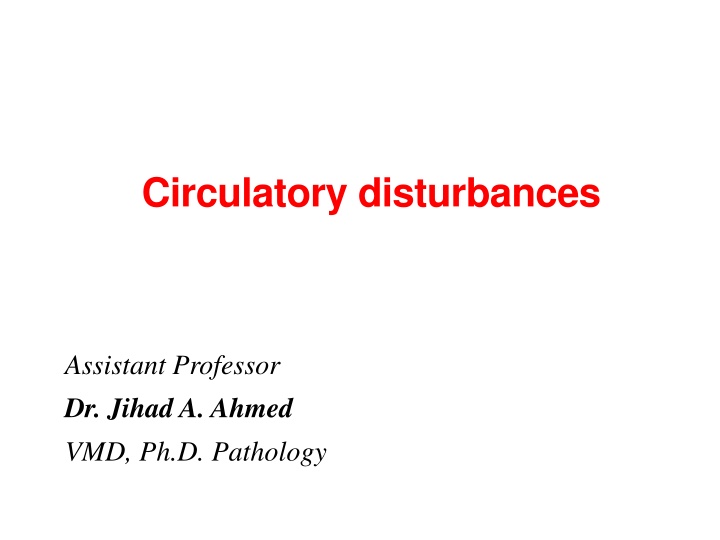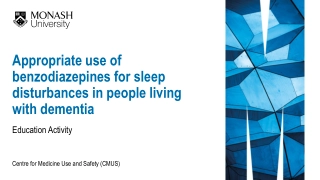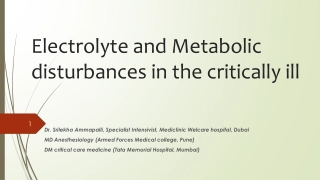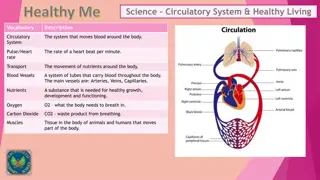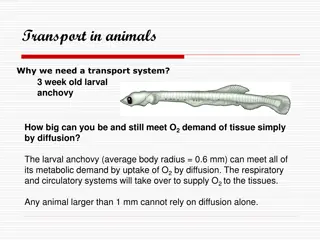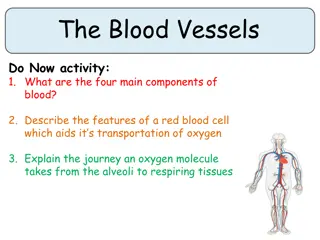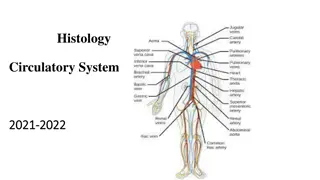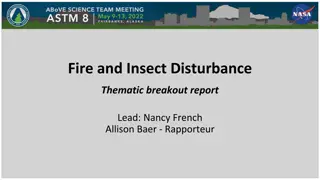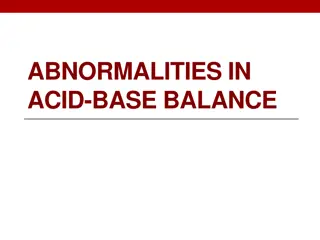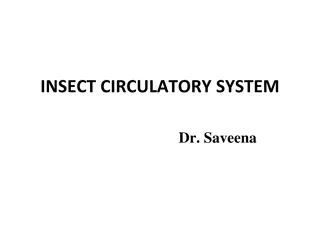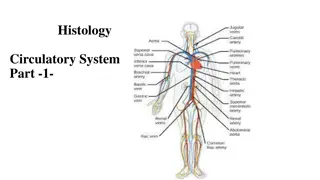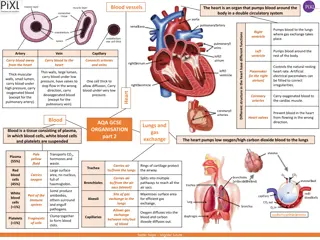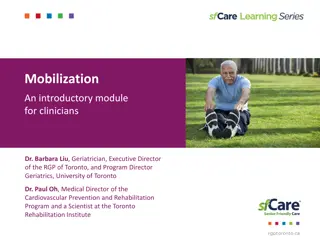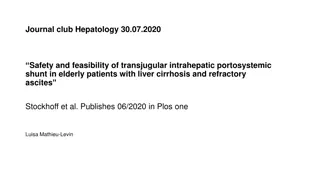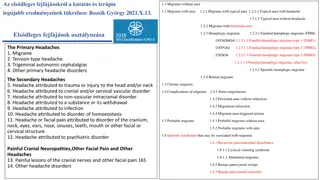Circulatory disturbances
Circulatory disturbances such as edema, hyperemia, congestion, hemorrhage, and shock are explained in detail. Edema is characterized by increased fluid in the interstitium due to various factors, while hyperemia and congestion involve increased blood volume in tissues. Hemorrhage refers to the extravasation of blood from blood vessels. Factors affecting these conditions are discussed, including hydrostatic pressure, plasma colloid osmotic pressure, and lymphatic drainage. Different causes and implications of circulatory disturbances are illustrated with images.
Download Presentation

Please find below an Image/Link to download the presentation.
The content on the website is provided AS IS for your information and personal use only. It may not be sold, licensed, or shared on other websites without obtaining consent from the author.If you encounter any issues during the download, it is possible that the publisher has removed the file from their server.
You are allowed to download the files provided on this website for personal or commercial use, subject to the condition that they are used lawfully. All files are the property of their respective owners.
The content on the website is provided AS IS for your information and personal use only. It may not be sold, licensed, or shared on other websites without obtaining consent from the author.
E N D
Presentation Transcript
Circulatory disturbances Assistant Professor Dr. Jihad A. Ahmed VMD, Ph.D. Pathology
1. Edema 2. Hyperemia and Congestion 3. Hemorrhage 4. Shock
Edema means increased fluid in the interstitium cavities hydrothorax, hydropericardium, ascites anasarca = severe generalized edema 3 major factors: hydrostatic pressure plasma colloid osmotic pressure lymphatic drainage inflammation
1. increase hydrostatic pressure impaired venous return congestive heart failure constrictive pericarditis liver cirrhosis ascites venous obstruction or compression thrombosis external pressure
2. Decrease Plasma colloid osmotic pressure loss or reduced albumin synthesis nephrotic syndrome protein-losing gastroenteropathy liver cirrhosis malnutrition
3. lymphaticobstruction lymphedema inflammatory elephantiasis Filariasis - Wuchereria bancrofti Erysipelas Streptococcus pyogenes neoplastic breast carcinoma (orange peel skin) post-surgical (LN resection) + postirradiation
Hyperemia and congestion mean increased blood volume in particular tissue a. hyperemia active (arteriolar dilation) red color striated muscle exercise b. congestion passive (impaired venous return) systemic x local blue-red color (cyanosis), edema event. hypoxemic necrosis, e.g. bowel accumulation of deoxygenated Hb chronic chronic hypoxia regressive changes + small hemorrhages siderophages
Hemorrhage is the extravasation of blood from blood vessels external (+ in hollow organs) internal: within tissue hematoma hemorrhagic diatheses insignificant injury vasculopathies trombocytopenia + -patia coagulopathy
Hemorrhage is classified into four types (types of hemorrhage) 1. Petechiae (1-2 mm) - skin + mucosa increase intravascular pressure, decrease platelets 2. Purpuras (3-5 mm) trauma, vasculitis, vascular fragility 3. Ecchymosis (1-2 cm) = hematoma (bruise) RBC phagocytosis by macrophages Hb (red-blue) bilirubin (blue-green) hemosiderin (golden- brown) 4. According to the location in the Cavities hemothorax, hemopericardium, hemoperitoneum hemarthros
Shock means systemic hypoperfusion due to a reduction of cardiac output / effective blood volume circulation hypotension cellular hypoxia features hypotension, tachycardia, tachypnea, cool cyanotic skin (x septic s. warm) initial threat + shock manifestations in organs prognosis origin + duration
Shock classified into 5 types (types of shock) 1. Cardiogenic shock: failure of myocardial pump myocardial infarction, arrhythmias pulmonary embolism 2. Hypovolemic shock: inadequate blood/plasma volume hemorrhage fluid loss (vomiting, diarrhea, burns, trauma) 3. Septic shock: vasodilation + endothelial injury Gram+, Gram-bacteria 4. Neurogenic shock: loss of vascular tone spinal cord injury 5.Anaphylactic shock: as IgE mediated hypersensitivity
